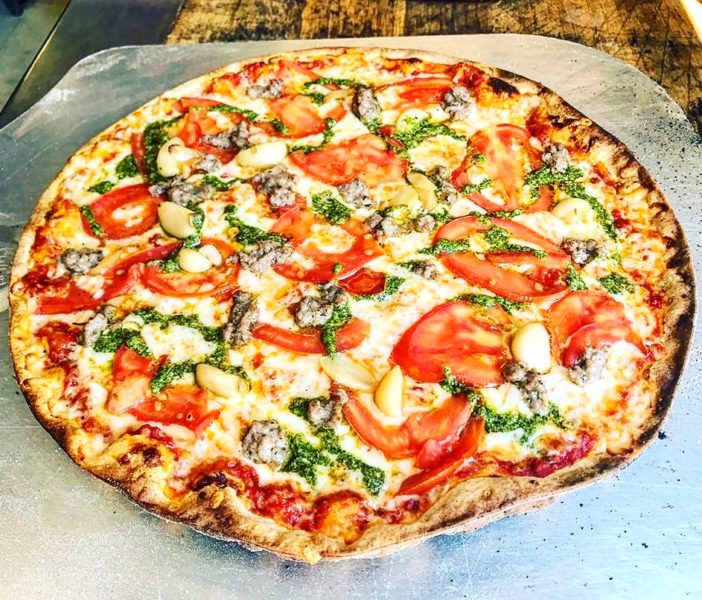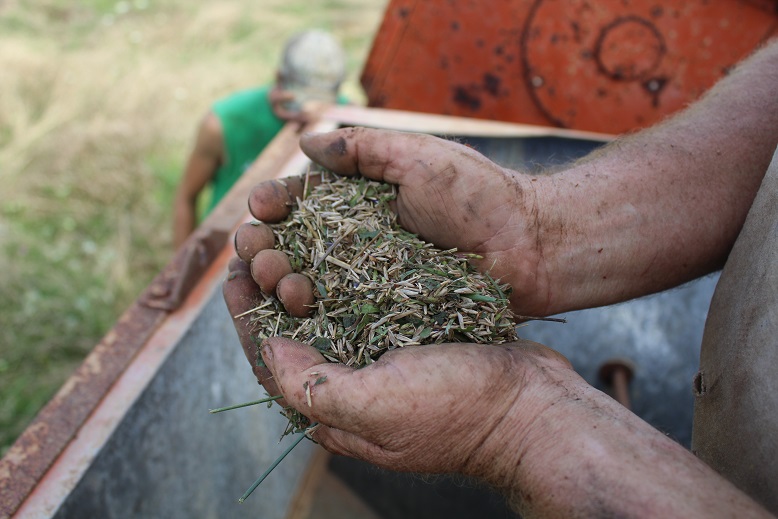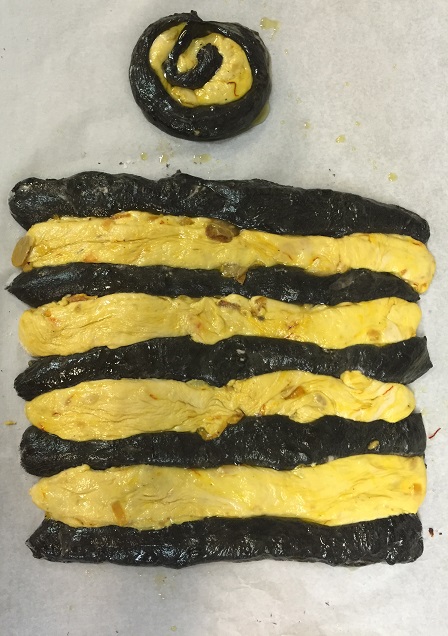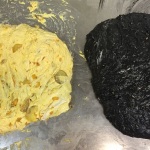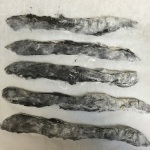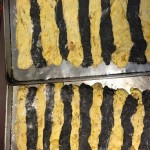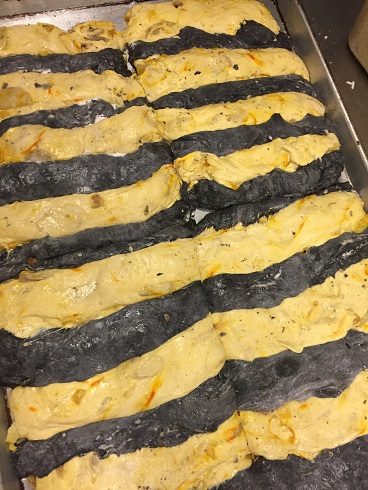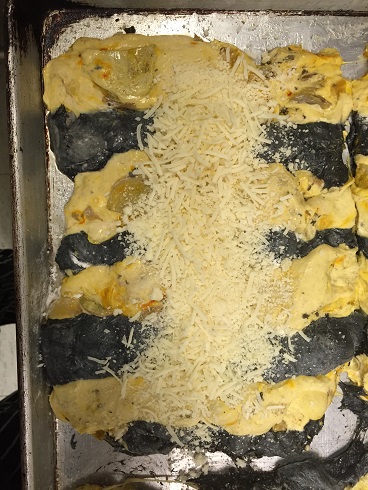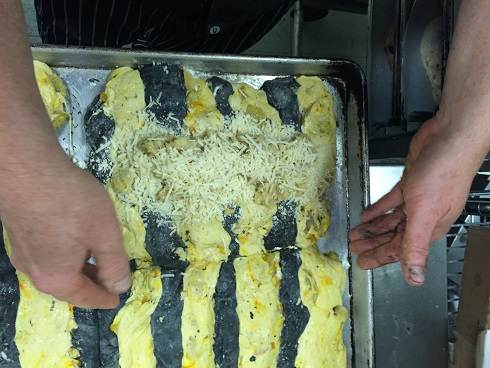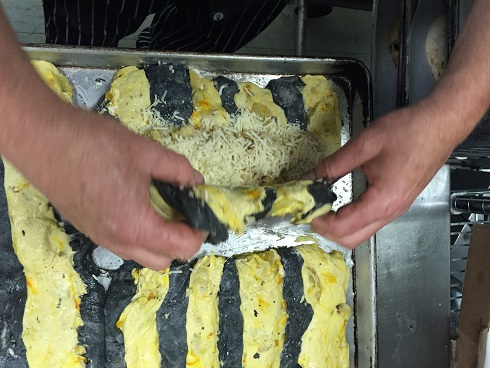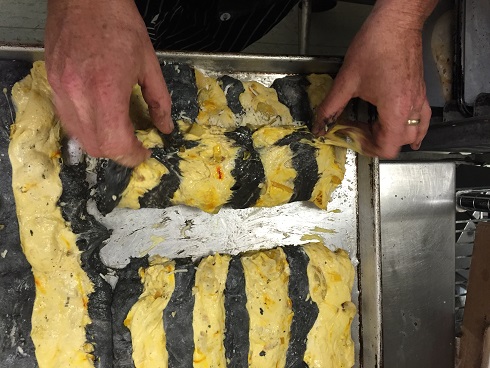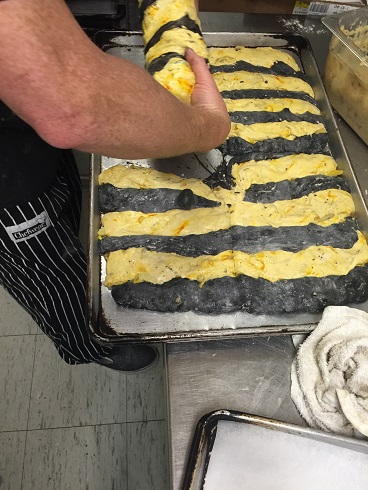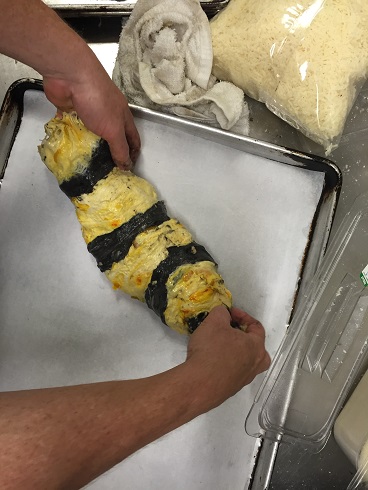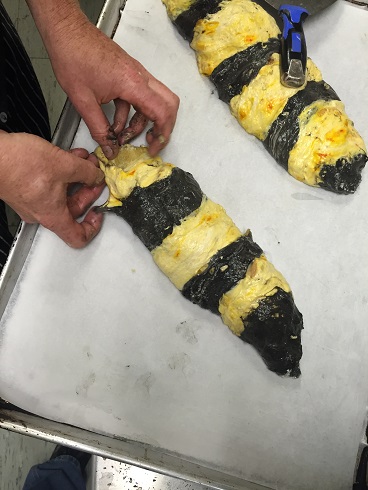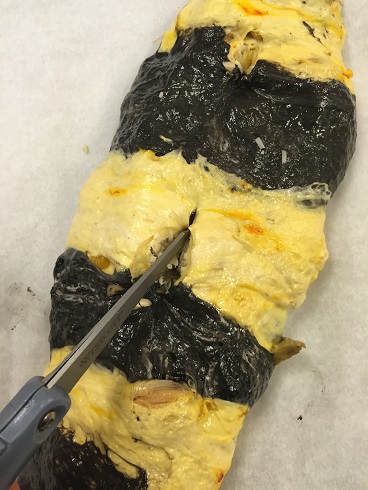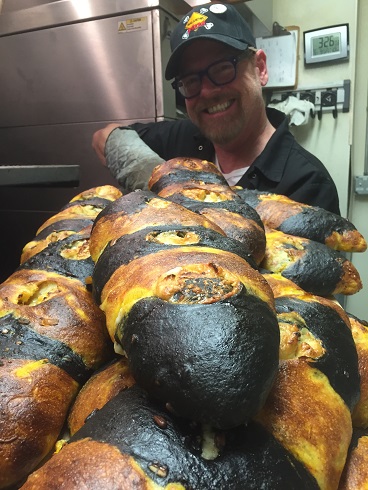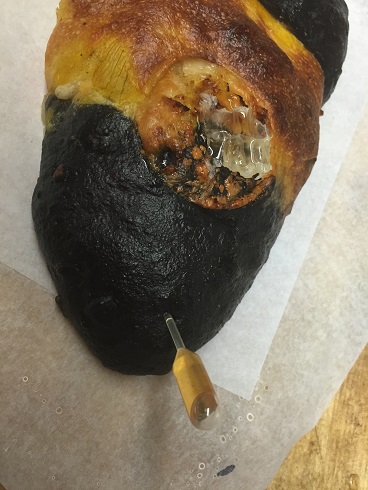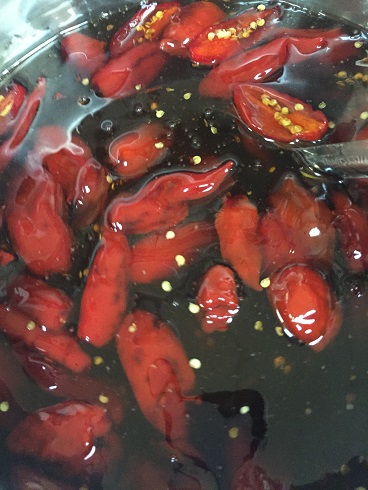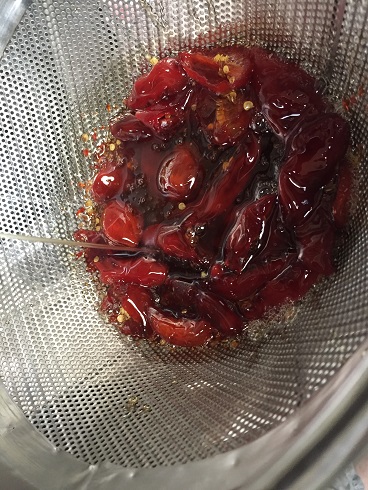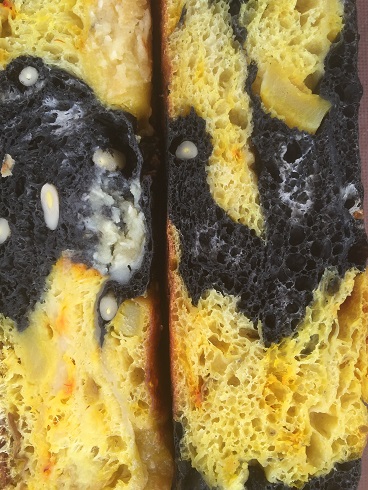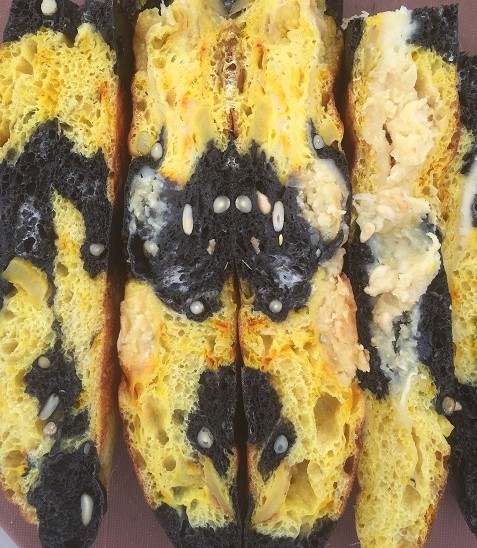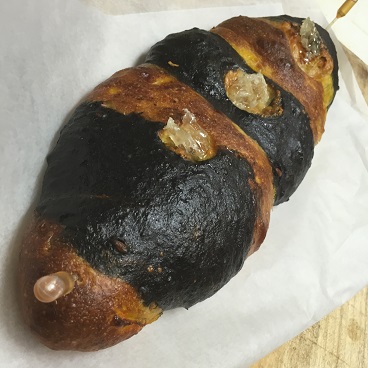Matt Starline holds up part of the first meager harvest of kernza berries in 2016. Seth Lutton, (top) has planted seven acres above the Hocking River to help me and other food and beverage suppliers integrate this perennial wheat into our menu mix.
“If we don’t get sustainability in agriculture first, sustainability will not happen.”
Wes Jackson

Our Kernza cracker-crust pizza using 50 percent Kernza flour and 20 percent hydration. This is topped with Fontina, cured Oliver Farms pork belly, Parmigiano Reggiano and Valorosso tomato passata.
We’ve come a long way in our quest for pizza perfection in this culinary universe. Many Pizzaioli and bakers dedicate their whole lives to the craft of the perfect pizza or bread. For some, that search for the great Neapolitan pizza or baguette of old is an obsession. Unfortunately, the pizza makers of old used flour that wasn’t genetically modified, sprayed with Round-up and super-fertilized. The old bakers used flour that wasn’t bleached and bromated, it was ground by stones using waterwheels or with mules.
The old ways do still occur through the unsustainable use of the earth to grow wheat. We scratch at the soil with diesel plows every spring blowing up billions of pounds of dust, then we plant a short-rooted, genetically engineered wheat for a short period in soil that is denuded of all nutrients which causes us to spray super-fertilizers and pesticides that leach into our water supplies. Compound that with the harvest by those spewing diesels again then the long slog of winter with nothing to comfort the earth except cold and death.
So why should independent restaurant owners like myself care about the pollution, wasted energy, poisonous waterways and dust clouds that hurt our earth?
Its all about the kids. Do we want them to inherit a farming system that is ruining the earth. Hell no is my answer.
Three years ago, I wanted to use my pizzeria and bakery to contribute in some small way to make the world a better place. With that in mind, I had figure out how to incorporate sustainable and non-sprayed raw materials into my menu-mix without going broke. I knew that it had to be a real game-changer and something that no one was doing yet. Kernza Pizza!
Alternative to Conventional Wheat
I figured a good start would be with my most used ingredient and the base for my pizzas and breads-wheat.
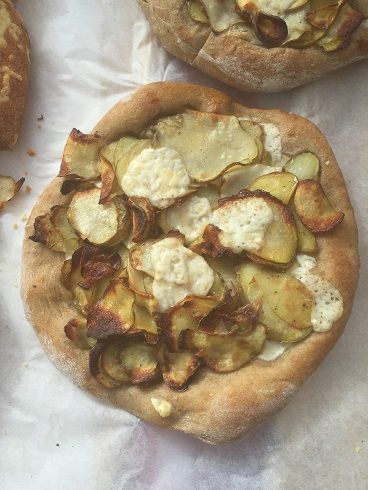
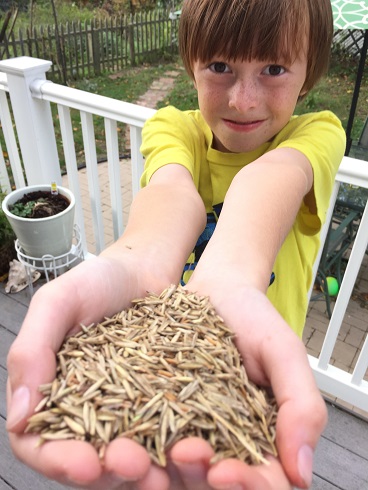
To grow industrial or “Conventional” wheat, large tracts of land get bombarded with insecticides and fertilizers. The erosion created by the constant dredging and plowing of the earth can be seen from space as the clouds of dust in spring sends plumes into the air like smoke signals spelling out our ignorance. Here in Ohio, the old-ways die hard. So much fertilizer is used in fields that the resulting algae blooms make numerous lakes unswimmable each summer.
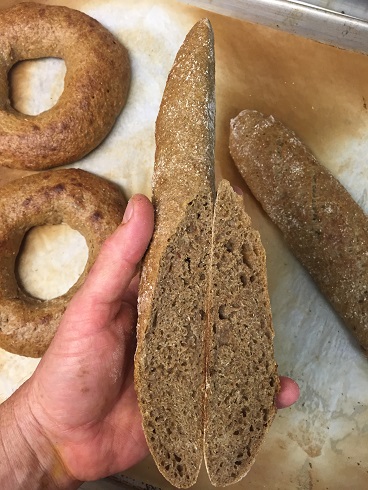
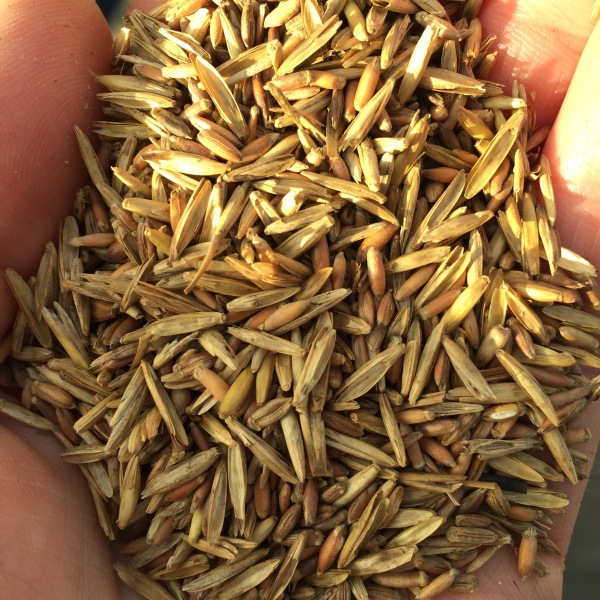
My first use of home-ground Kernza berries at 100 percent with no added gluten or wheat flour.
What to do?
Having had first hand experience with local farmers who plant, grow and harvest their bounty every year without ruining the land in the process, I decided to seek some help to find a sustainable grain for my pizzas and breads.
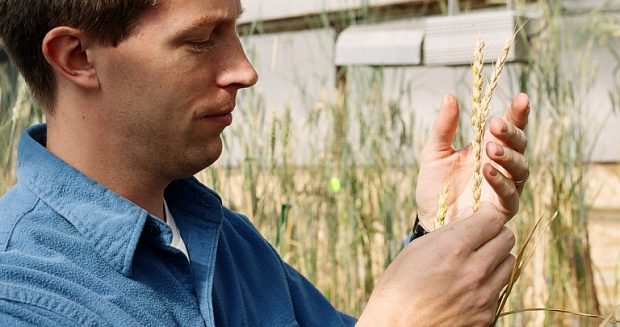
I first contacted Lee DeHaan (above) at the Land Institute in Kansas which was formed by Wes Jackson to promote new, sustainable ways to grow foods. He was an excellent contact and full of information I was looking for. (I even gave him and Avalanche “Chupocabra” hat.) Lee referred me to Steve Cullman, a brilliant professor at Ohio State University in Wooster, Ohio who showed me his fields in Wooster, Ohio and too the time to make a short film for all the farmers with questions. Steve also set me up with a brilliant amount of kernza seed to mill and plant.

These are Kernza roots on the left, compared to the conventional wheat roots on the right of this picture. This says it all- no watering, cold tolerant, drought resistant and rich soil.
Steve had been growing Kernza, a perennial wheatgrass that produces berries every year without tilling. He explained that the roots of the kernza plant grow deep enough so that constant watering is not needed. These deep roots are also highly tolerant of harsh weather as they’ve found at the University of Minnesota.
Here is the 20 minute video that Joe Bell took of our very informative trip to one of the first fields of sustainable wheatgrass in Wooster Ohio. I had some questions for Steve from my farmer friends about how to plant and grow this grain.
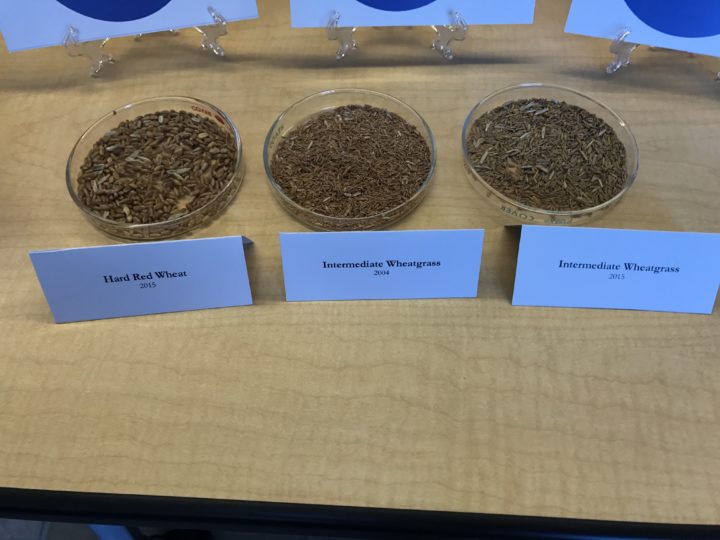
Professor Cullman gave us a huge amount of Kernza seed which we screened and I small-batch milled. In the meantime, my farmer friends tried getting their Kernza seed into the ground but 2015 was a very hot year and the yield was minuscule.
The End User
After attending a conference at the University of Minnesota last year, I was heartened greatly at the motivation of certain bakers, brewers and growers were showing toward Kernza. The selective growing process was making the Kernza berries larger and the farmers were finding out that Kernza was the best crop to add nitrogen in overused cropland.

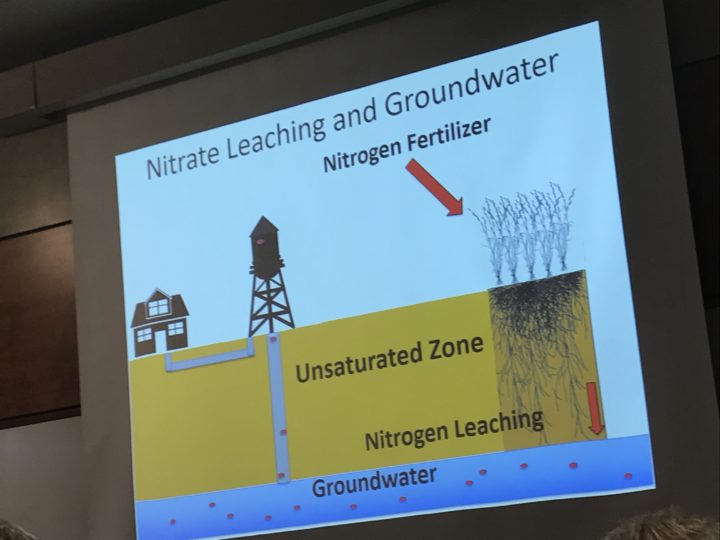
I also found some great information from General Mills, (yes, THE General Mills.) Their scientists had analyzed Kernza flour and it had a great amount of protein but the bran in the berries was troubling for bakers. The bran contributed to a less-than-desired-rise in bread so bakers were adding other, more glutenous grains to the mix to produce a more traditional looking and tasting loaf. When I was in Minnesota for the Kernza conference, I was shocked to hear that bakers were only using 15% to 20% kernza in their breads. I had to use more to prove to my local farmers that I could move as much kernza as they could grow.
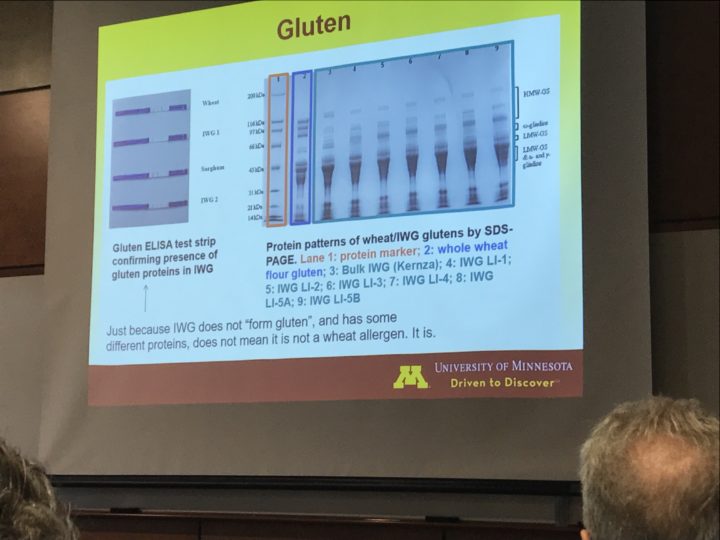
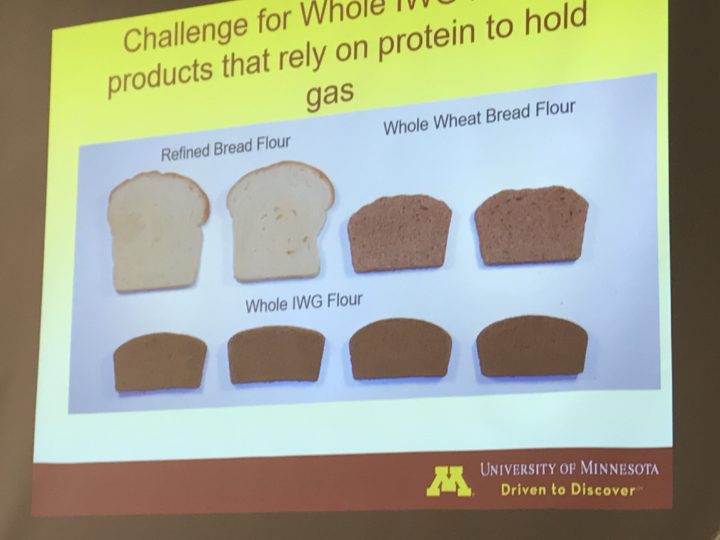
I also found that the use of Kernza in the marketplace was minimal because the circle from farm to field was devoid of end users such as myself. My problem was the supply of milled Kernza to keep a perennial wheatgrass pizza in my menu-mix. Luckily, I found a purveyor that could get me a constant supply of organic Kernza.
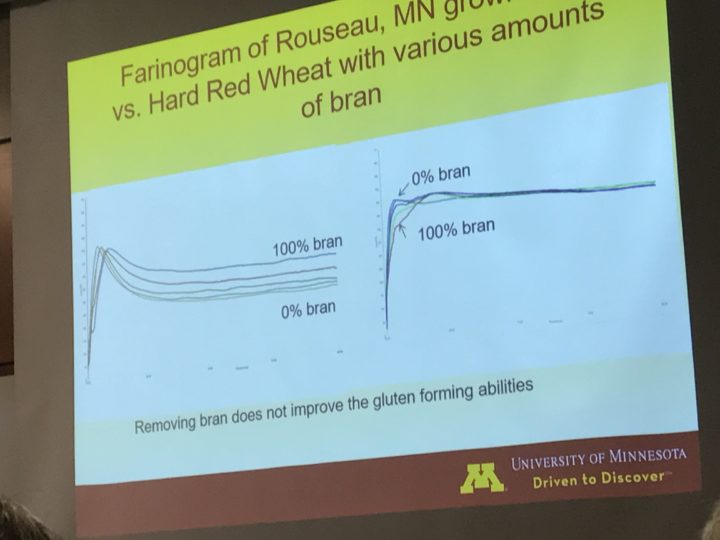
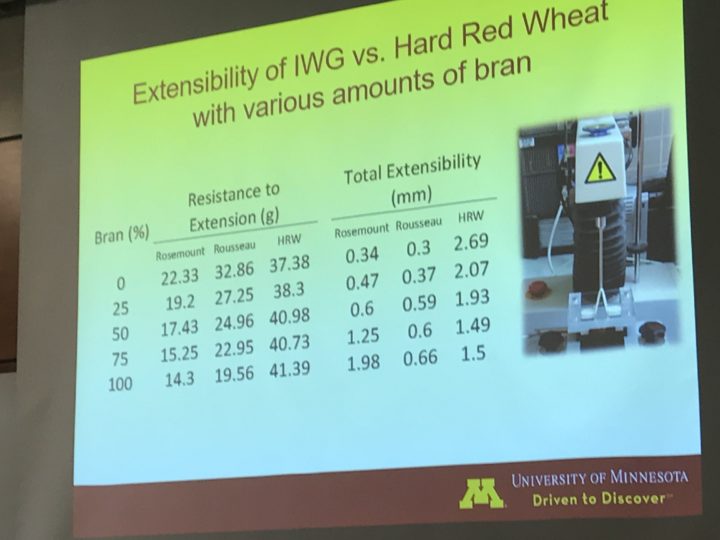
The bran impeded the strong gluten net that held carbon dioxide creating an airy crust. I had found this a problem in the past when using 100% spelt flour that wasn’t milled very fine. So I tried something completely different. I decided to go with the crunch and cracker-like characteristics inherent in Kernza and made a beautiful pizzza using almost 60% Kernza flour. These pies, cooked at 600 degrees for only 4 minutes rocked!
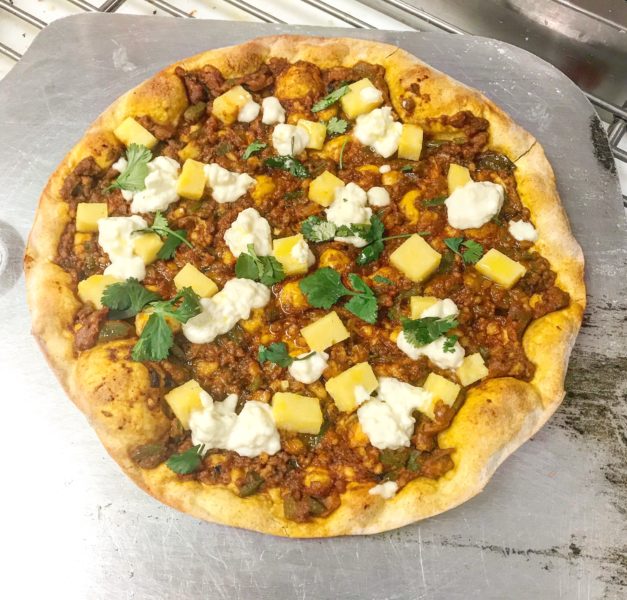
I’m now a true and dedicated disciple of Kernza and every time I cook a Kernza pizza or bread, my hope for humanity ratchets up a few notches. I thank Lee DeHaan at the Land Institute, Professor Steve Cullman at Ohio State University, The University of Minnesota and all the local farmers who took the chance to grow Kernza here in Athens and Plovgh for helping me.
Now, I challenge all my fellow bakers and pizza makers to do your part to make perennial wheat part of your menu mix.
